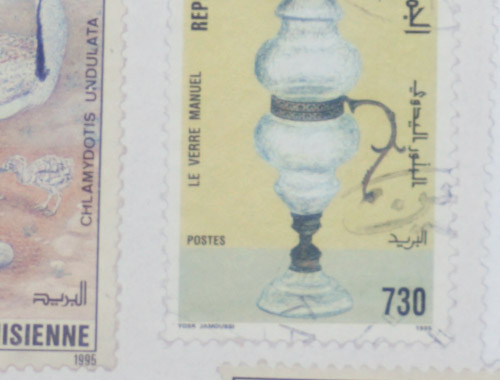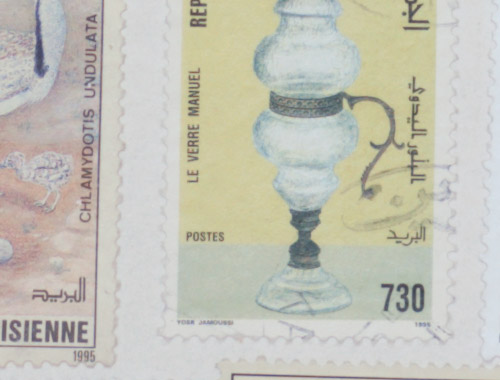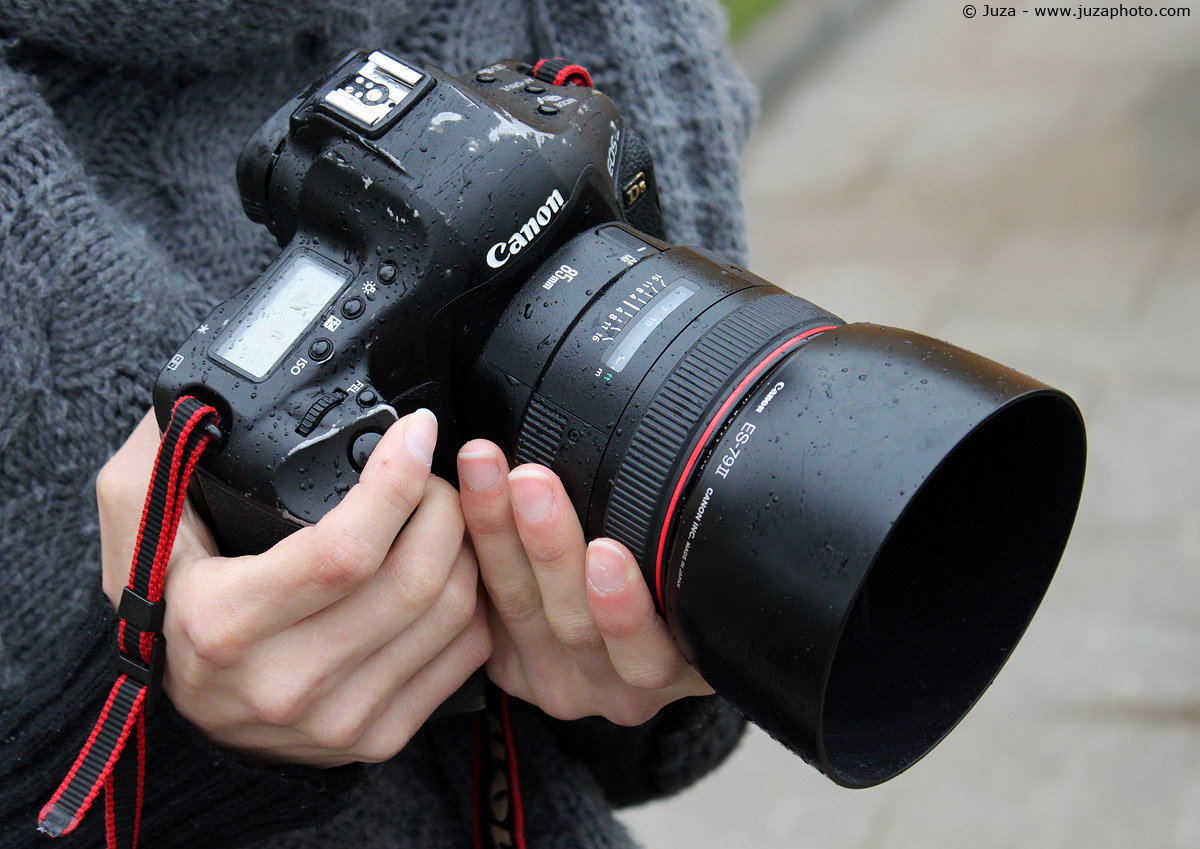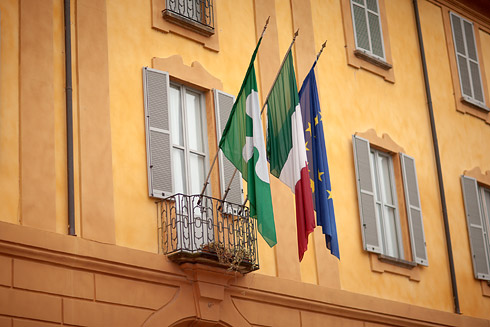Canon 85mm f/1.2 L USM II (vs Canon 85mm f/1.8)
The Canon 85mm f/1.2 is undoubtedly a fascinating lens. Together with the 50mm f/1.2, it is the brightest lens currently manufactured by Canon; it is one of the biggest, brightest and most expensive 85mm lenses by every manufacturer. Its paper thin depth of field, combined with the quality of Canon L lens, makes it a very attractive lens for portrait and reportage photographers: but how does it behave in practice?
Many thanks to my friend
Sandro who loaned me the 85mm f/1.2 and to Paolo who loaned the 85mm f/1.8!
As usual, I recommend to give a look to the page
Testing and reviewing a lens: it will help you to understand better this review and my testing methodology!
Specifications (compared with similar lenses)
����| � | � �Canon 85mm f/1.2 USM II | � �Canon 85mm f/1.8 USM | � �Sigma 85mm f/1.4 EX HSM |
�
| �Focal length | � �85 mm | � �85 mm | � �85 mm |
�
| �Macro ratio | � �0.11x | � �0.13x | � �0.11x |
�
| �Max Aperture | � �f/1.2 | � �f/1.8 | � �f/1.4 |
�
| �Stabilization | � �No | � �No | � �No |
�
| �Autofocus | � �Ultrasonic AF Motor | � �Ultrasonic AF Motor | � �Ultrasonic AF Motor |
�
| �Closest Focus | � �0.95 meters | � �0.85 meters | � �0.85 meters |
�
| �Dimensions | � �92 (D) x 84 (L) mm | � �75 (D) x 72 (L) mm | � �85 (D) x 88 (L) mm |
�
| �Weight | � �1025 g | � �425 g | � �? g |
�
| �Weather sealing | � �No | � �No | � �No |
�
| �Price | � �$ 1950 | � �$ 380 | � �$ ? |
�
| �Production | � �2006 - | � �1992 - | � �2010-� |
�
Built quality and autofocus
When you take the 85mm f/1.2, you are looking at 1 kg of metal and glass. It is surprisingly similar to the discontinued 50mm f/1.0, but the autofocus is a little better, even though it is not super fast; other than that, the copy I tried had a strong backfocus (that is not a problem with recent cameras, you can easily correct it). The focus of the 85mm is a bit different from usual; even the manual focus is performed by the AF motor; when the camera is turned off, you can't focus, even if MF. Not a problem anyway!
The 85mm f/1.8, in comparison, is much lighter and it has a less professional built quality, but surprisingly it has a faster AF! The 85mm f/1.8 USM has the true ultrasonic motor, while the big 85 f/1.2 has a much slower AF (I thought that it had micro-USM, but it seems that it actually has ring-type USM...it is surprising, because all other lenses with ring-USM have a faster, more silent AF, without extending elements).
The 85mm f/1.2 is more than twice as heavy as the 85mm f/1.8; it has the rock solid built quality of the best L lenses. The huge front element is impressive; you can protect it with the large lens hood, that Canon kindly includes in the $1950 price of this lens :-)
The Sigma 85mm f/1.4 is still a mystery since at the time of this review (April 2010) it is not yet available. I'll try to test it when it reaches the market; if image quality is good, it may be a very interesting alternative to the 85mm f/1.2.

The 85mm f/1.2 in the field
There are some things you won't know by just reading the specifications: for example, Canon does not tell you that you will never see the f/1.2 depth of field in viewfinder. This is true for every super bright lens: in the viewfinder you see the depth of field of the lens at about f/4 or so. You can stop down more by using the DOF preview button, but you can never see the true f/1.2 depth of field into viewfinder. This is a big problem for the 85mm f/1.2, because it has paper thin depth of field, and even a minimal focus error gives a completely out of focus image. But when you look into viewfinder, you will always see more DOF than reality: what you can do? You can either pray&hope, or you can use AF (but it may not be accurate), or you can use live view. From my experience, live view is by far the best option: in LV you see the actual f/1.2 depth of field, and you can make a very precise manual focus using the 10x magnification.
Is the depth of field of f/1.2 actually usable? Surprisingly, yes. If you are extra careful, you may even manage to take a good portrait, with both eyes and the lips in focus - but it is not easy, many times you will end up with one eye in focus and the other one out of focus. For a photo of an entire person, a car, or something like that, the depth of field is enough, if you focus carefully and if your subject is parallel to you.
The 85mm 1.2 is a lens for creativity. It always gives very smooth backgrounds; it allows to make amazing effects of selective depth of field.
Background blur and depth of field
Is there a big difference between the background blur of f/1.2 (as the canon 85 1.2), a f/1.4 (as Sigma 85 1.4) and f/1.8 (as Canon 85 1.8)? This is the same subject photographed at the three apertures.
����| �Background blur at f/1.2 | � �Background blur at f/1.4 | � �Background blur at f/1.8 |
�
� | � � | � � | �
�
While there is not an huge difference between f/1.2 and f/1.4, the difference between f/1.2 and f/1.8 is clearly visible.
Image quality (in comparison with Canon 85 mm f/1.8)
I have tested the lenses on my Canon 1DsIII (21 megapixel, fullframe). The lenses were mounted on tripod; I have used mirror lock up and self timer. The following images are 100% crop from the unprocessed RAW file.
����| � | � �Canon 85mm f/1.2 L USM II (center) | � �Canon 85mm f/1.8 USM (center) |
�
| �f/1.2 | � � | � �not available (the max aperture is f/1.8) |
�
| �f/1.8 | � � | � � |
�
| �f/2.8 | � � | � � |
�
| �f/5.6 | � � | � � | �
�
In the center, there are no visible differences between the two lenses. Both are ok wide open, but they show a clear improvement by stopping down.
����| � | � �Canon 85mm f/1.2 L USM II (corner) | � �Canon 85mm f/1.8 USM (corner) |
�
| �f/1.2 | � � | � �not available (the max aperture is f/1.8) |
�
| �f/1.8 | � � | � � |
�
| �f/2.8 | � � | � � |
�
| �f/5.6 | � � | � � | �
�
Even in the corners there are not big difference...actually, in my opinion the 85mm f/1.8 is a little bit sharper, and it has less chromatic aberration.
Samples and comments
These are some sample photos taken with the Canon 85mm f/1.2 L USM II on Canon 1DsIII. You can download either the untouched photo (JPEG converted from RAW without any additional post processing; minimum contrast and saturation, no sharpening, no AC, distortion or vignetting correction) or the post processed version. The untouched photo is a good way to see the real image quality of the lens, and the post processed versions allow to see the final quality you can get with good post processing techniques.
�
�
The image quality is not one of the strengths of the 85mm f/1.2. The sharpness is pretty good even at f/1.2, but it has a nasty red/green fringe that is different from the common chromatic aberration: while the CA can be easily removed, the "fringe" of the 85mm is very difficult to remove. In some situations, as in the first two examples, it is not a problem because there is not much contrast, but on other situations (Honda and Alberto samples), when there is strong contrast (e.g. dark subject against bright background), the fringe is annoying, in particular in the out of focus areas.
Of course if you stop down the image quality gets better, but if you plan to stop down...don't buy this lens! The purpose of a super bright 85mm is to be used wide open; if you don't need f/1.2 you can buy the 85mm f/1.8 and save a lot of money.
Conclusions
Is the 85mm f/1.2 a marvel? or is it just an overpriced lens? The answer is not easy and, in this case, it is largely subjective.
The sharpness is good for such an extreme lens; the built quality is top notch, and the depth of field is extremely thin. But it is very, very expensive, while for few dollars you can get the 85mm f/1.8, that has identical image quality. Other than that, overall the image quality is a mixed bag: good sharpness and great bokeh, but nasty chromatic aberration that can not be easily removed.
At the end, it depends by your preferences. If you are a fan of selective focus; if you want a lens for "creative" photos; if you want to take photos in low light, the 85mm f/1.2 may be a good choice. Oh well, there is another "if"...if you have the budget. The big 85 is not cheap and honestly I think it is on the overpriced side. But sometimes you can get truly amazing photos that you could have not taken with any other lens!
If, instead, you are mainly a nature photographer and you just take some portraits from time to time, I don't recommend the 85mm 1.2: you can do the job with the much much cheaper 85mm f/1.8 (same image quality and better AF), or with one of the lenses you already have; for example I like to take portraits with the 300mm f/2.8 on 1DsIII...yes, you have to stay on the other side of the universe, but it gives a marvelous creamy bokeh, without the nasty CA of the 85mm and with a lot more depth of field.
























 JuzaPhoto contains affiliate links from Amazon and Ebay and JuzaPhoto earn a commission in case of purchase through affiliate links.
JuzaPhoto contains affiliate links from Amazon and Ebay and JuzaPhoto earn a commission in case of purchase through affiliate links.